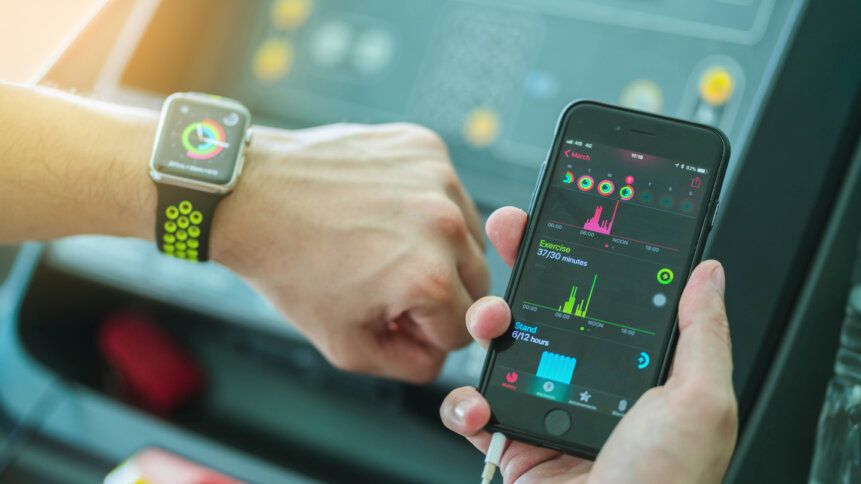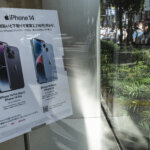JNUC Reveals New Developments in Apple Access and Security Infrastructure

Jamf is an organization that helps Apple fans get the most out of their devices and the whole Apple architecture. At the Jamf Nation User Conference (JNUC), between September 27th-29th this year, stacked end to end with heavyweights from Apple, Google, Okta, Microsoft, Amazon Web Services and SwiftConnect, among others, it revealed a solid handful of new developments, integrations, partnerships and projects that will help advance the capabilities of the Apple community in the year ahead.
Dean Hager, the CEO of Jamf, described the remit of this year’s conference as “simplifying the management and security of devices used for work.” That somewhat vague definition broke open to include lots of cybersecurity developments, from zero trust access to strong identity-based access to devices, servers, and even buildings – with elements including the beginning of a device revolution on access passes, shifting from old-style personalized passes to in-wallet digital passes.
“We are asking Jamf Nation two questions,” said Hager, expanding on the ‘vibe’ of the Conference. “Do your users love the technology they are using for work? And do your IT and security teams trust that technology? Our focus at Jamf is to ensure the answer to both of those questions is a resounding ‘yes’, with something we call Trusted Access.”
If the atmosphere of love and trust sounds vague and anodyne, it’s just possible you’ve never been to a Jamf Nation User Conference before. While the vibe may sound like an Extinction Rebellion march, the technological developments – and the philosophical rigor behind them – are absolutely hardcore, cutting-edge, and determined to change the way the technologically-enhanced business world looks like for the next two to five decades.
BYOD With A Difference
Tackling the BYOD (Bring Your Own Device) culture that has significantly bloomed in the pandemic and post-pandemic years, Jamf kicked of the conference by outlining its own new approach to the working model that appears to be here to stay.
With its own internal offering for BYOD, based on Jamf and Apple workflows, it aims to streamline the sheer amount of technology BYOD workers frequently carry by creating the bifurcated cellphone – used for both work and play. Apple cynics, of whom there are many, would say the idea smacks perfectly of the company’s ethos – an idea so useful it’s likely to get wide take-up, while nevertheless being based on the premise of a potentially unwarranted trust in authority.
The philosophy is for future generations to quibble over. The technology remains fairly impressive, including the like of employee self-enrolment and setup (independent of the tedious human process of IT department authorization, device partitioning for secure work with a separate partition for personal privacy (there’s the electronic trust in authority), a cloud-centered, identity-based single sign-on for all work applications and access to corporate data, and automatic zero-trust blocking of all compromised users and devices among a handful of other high-tech advancements. Perhaps the cutest element of the workflow is “Apple Focus” – a function that allows the iPhone to be switched between work-only and personal-only modes, so users can instantly differentiate and streamline their phone user journeys, and allegedly underscore the work-life balance of users.
Secure, Fresh Out of the Box
A new device security protocol, which secures your devices straight out of the box was revealed too. That has a special relevance to the remote worker community, who might not otherwise get the chance to have their devices set up with the right security by their in-office IT department. The Jamf development includes zero-trust deployment, so users can auto-configure their devices in-network security threats immediately – literally from the moment the device is first powered up for the first time. With endpoint security, the new unboxing security app means user identity and role are automatically assigned, so the need for users to enter credentials to get their devices work is significantly streamlined.
In the words of the old song, everyone will be doing this tomorrow – the clever part is doing it today.
Similarly, one of the highlights of the conference told a death knell for the traditional plastic access badge. The badge, a favorite of adventure movies for decades, is both a personal identifier to other staff and, in recent years, an identifier of authenticated, permitted staff to access secured or safety-critical buildings, but over time, both government offices and corporate headquarters have taken to using plastic access badges with increasingly sophisticated technological elements, from bar codes to QR codes, to double down on secure access to offices and facilities where, to the right attacker, highly valuable data might be stored.
Swipe Here
Jamf has been working on a new integration with SwiftConnect that will essentially transfer the whole identification pass to your Apple Wallet (on either your iPhone or your Apple Watch).
There are several practical thought processes to this move, beyond the science-fiction cool of your wearable communicating with the doors to your office. Quite apart from the potential for plastic passes to be lost or stolen, a prolonged period of working remotely has apparently left many staff with a broken instinct for picking up their pass at home and bringing it to work – whereas there is not a soul alive in the West who leaves for work without taking their phone or their funky, multifunctional smart wearable. Identity authentication will be achieved through the user’s cloud identity – which puts additional security pressure on the cloud managers themselves. Fortunately, the likes of Microsoft, Okta, Google, HID, Lenel, Genetec and others have been involved in the credential management phases of this integration, so when it becomes the new normal, it should deliver a relatively seamless user experience.
The Jamf National User Conference frequently outlines the way in which business technology will develop and come to market within the next couple of years.
Prepare yourself for unboxed security, one phone instead of two – and prepare to turn in your security pass forever.










